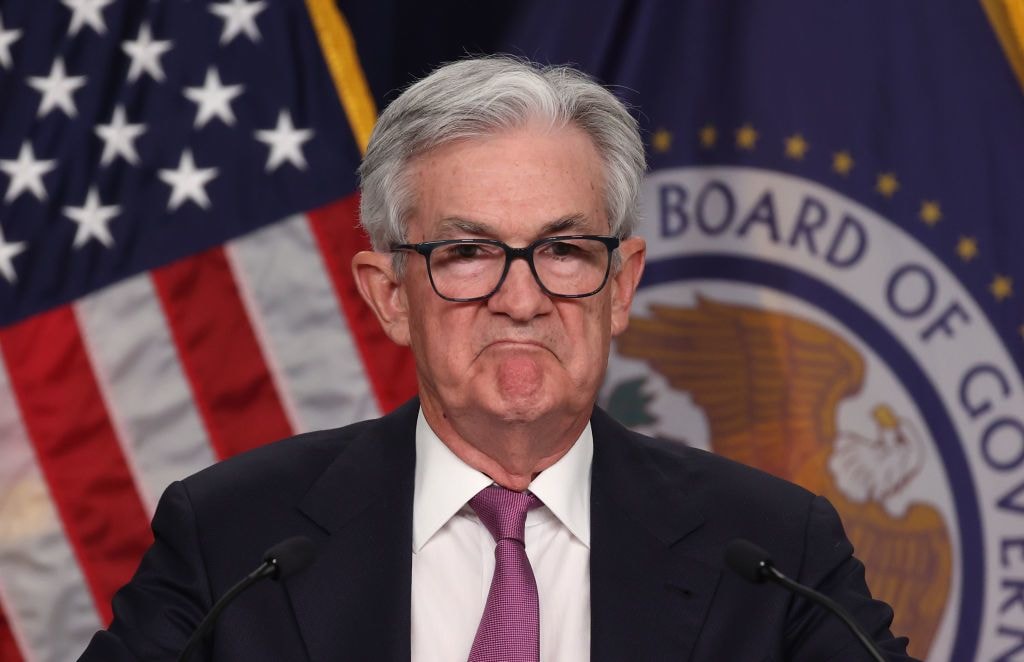
The prices of stocks and bonds moved sharply up on the news, with the riskiest assets doing especially well. As many analysts pointed out, investors are clearly betting that the Fed isn’t going to do what it says. The interesting question is whether this matters — and the answer to that depends on another question: Why don’t they believe the Fed?
There are (at least) three possibilities. Powell alluded to the first in his comments after the interest-rate announcement: This is a straightforward disagreement about where the economy is headed. “I’m not going to try to persuade people to have a different forecast,” he said. “But our forecast is that it will take some time and some patience, and that we’ll need to keep rates higher for longer.”
If it’s a simple difference of opinion, there’s no problem. If private forecasters think inflation will subside faster than the Fed expects, and they turn out to be right, they’ll also be right that “higher for longer” won’t materialize. The Fed will forgo the further increases and start to think about cutting sooner. The facts have changed, it will say, so we’ve changed our plans. Who would object?
The second possibility is more awkward. Say both the Fed and the markets agree that it is using its comments about future rates as an instrument to suppress demand — but they still disagree about the direction of the economy. In this case, there’s a problem: The Fed’s policy isn’t working because the “forward guidance” instrument is ineffective. If “higher for longer” isn’t believed, interest rates should be higher right now to deliver what the Fed sees as the required moderation of demand.
The third possibility compounds this problem. Not only do the Fed and the markets disagree about the economic forecast, but the markets suspect that the Fed is using interest-rate guidance dishonestly. Many analysts are assuming exactly this — that the Fed isn’t just mistaken, it’s bluffing. Unfortunately, it’s plausible, because of the self-refuting character of the markets’ exuberance. High asset prices mean easier financial conditions and higher demand, which (other things equal) call for higher interest rates. Accordingly, if the markets can be led to expect higher interest rates, higher rates might not be needed.
In this third scenario, the problem isn’t just that interest-rate guidance isn’t working. It’s that the Fed’s credibility is being called into question. If it can be deliberately misleading about its interest-rate intentions, where else might it shade the truth? Maybe a little evasion on its commitment to price stability would also serve the public interest.
This is the greatest danger in relying so much on interest-rate intentions — that it will undermine the Fed’s credibility where it really counts. In isolation, the reliability of the Fed’s interest-rate guidance is unimportant. Its predictions aren’t even really predictions, much less promises; neither the Fed nor anybody else considers the central bank bound by them.
But if relying on these predictions to conduct monetary policy calls the Fed’s overall honesty into question, which is what “bluffing” means, something far more important is in jeopardy. It’s essential that the Fed’s commitment on price stability — the end, as opposed to the means — is believed.
Granted, forward guidance is sometimes all a central bank has. When interest rates are at zero, they can’t easily be cut any more. A promise of “zero for longer” then serves as a last resort. Now, though, the Fed can raise or lower interest rates depending on how demand evolves — something which is especially hard to predict under current circumstances. In this sense, at least, monetary policy is back to normal.
It follows that the Fed should worry less about the future policy rate and be more willing to use the current policy rate promptly and flexibly to respond to conditions here and now. If it thinks demand is still running too hot, it should set the policy rate higher today, not three or six months from now. If it doesn’t know what the interest rate should be in three or six months — and it doesn’t — then when it is asked about its plans, the best thing for it to do is change the subject.
More From Bloomberg Opinion:
• The Bank of England Should Raise Rates One Last Time: Marcus Ashworth
• Why the Fed Should Raise Rates 50 Basis Points: Mohamed El-Erian
• How the Federal Reserve Should Talk About Inflation: The Editors
Want more Bloomberg Opinion? Subscribe to our daily newsletter.
This column does not necessarily reflect the opinion of the editorial board or Bloomberg LP and its owners.
Clive Crook is a Bloomberg Opinion columnist and member of the editorial board covering economics. Previously, he was deputy editor of the Economist and chief Washington commentator for the Financial Times.
More stories like this are available on bloomberg.com/opinion

